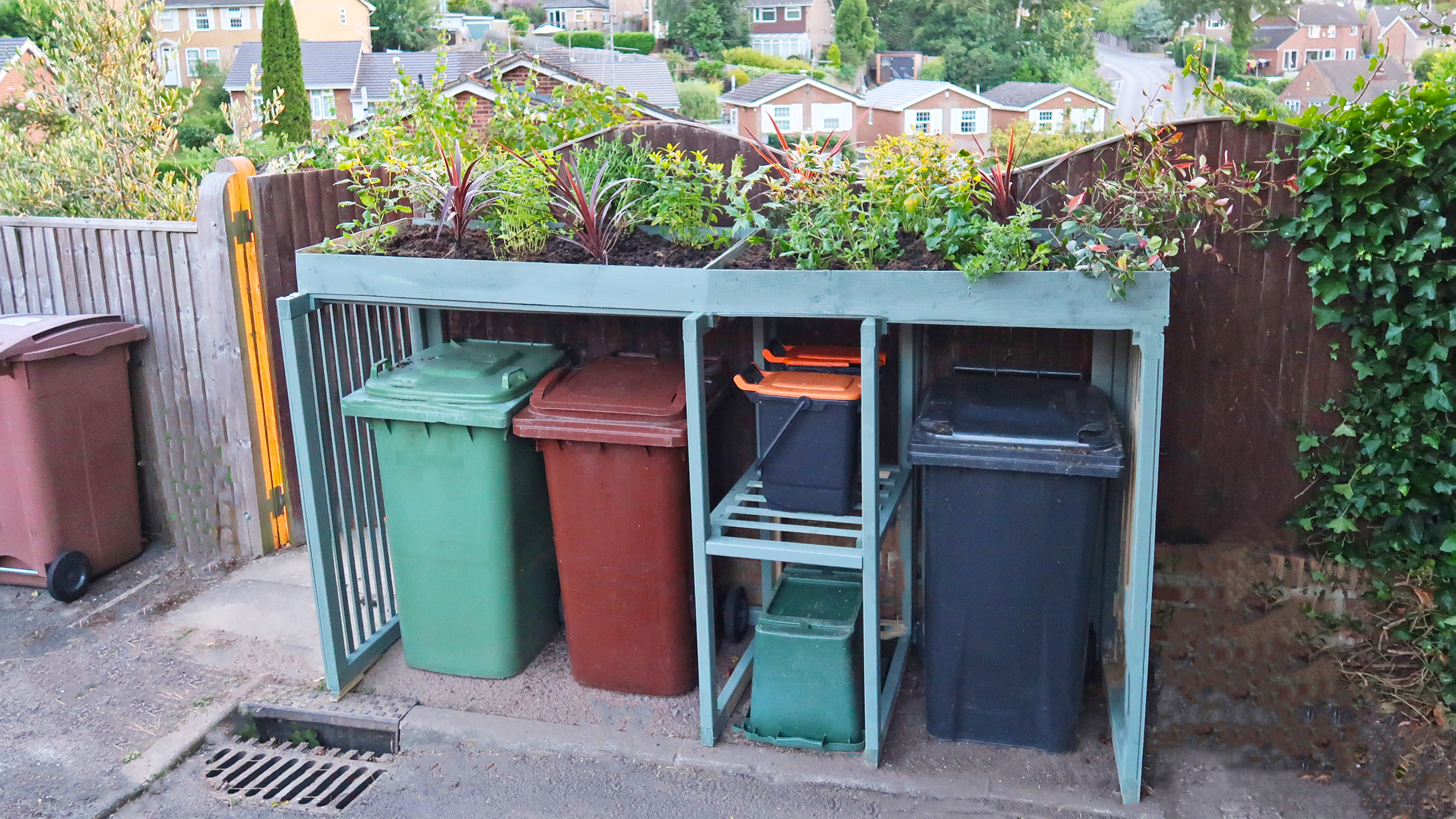
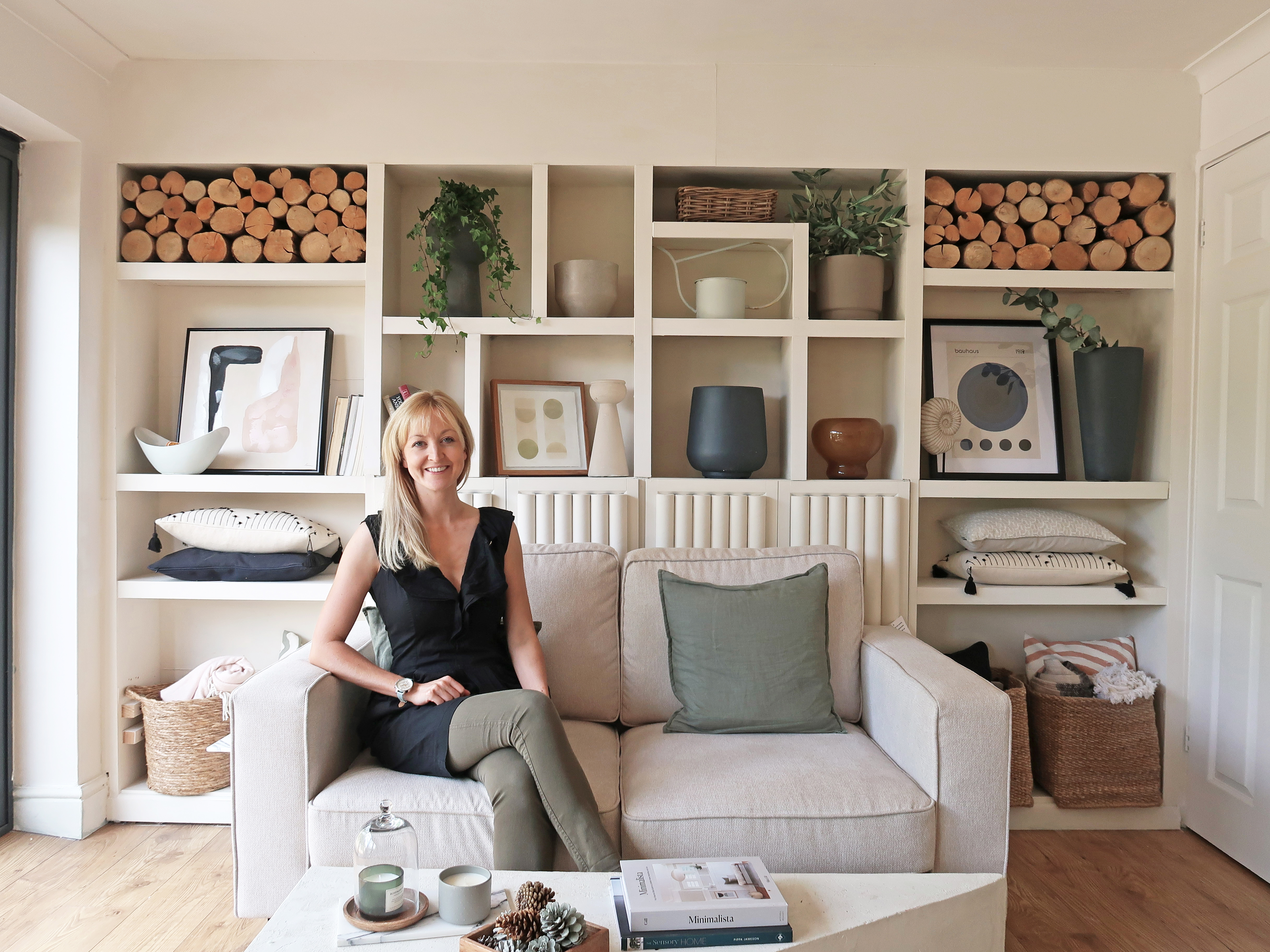
After noticing that our ever-growing collection of wheelie trash cans and recycling bins was looking disorganized and frankly a bit chaotic, I decided it was time for a glow-up and decided to build a DIY trash can enclosure to disguise them for good.
Although curb appeal was the main driver for tackling this DIY project, there are lots of additional benefits that make it a good one even if your garbage isn’t causing you embarrassment.
Bespoke wheelie bin design
Another great thing about this project is that it’s easy to adapt the shape and style of the store to meet the requirements of your home. You can increase the size if you have larger trash cans or just more of them and it’s easy to scale down too. You can add doors to the front if you want to conceal the bins completely, although, I opted for a more open style which makes for easier access. Your choice of materials is another opportunity to put your stamp on the design and help the final unit blend in with its surroundings. If you are all about the easy life, you could really simplify the design and buy ready-made pieces of trellis for the back and side panels, whereas if upcycling is your thing, then why not use leftover wood or even old pallets that you can pick up easily on Facebook Marketplace or Gumtree.
I’ve seen a lot of bin stores that have a separate roof/lid for each trash can so that you can lift them up to access the bin. Although this is a handy feature, I was really keen to plant up the top of the bin store to create a large raised planter full of fragrance and color so I decided to add some height to the sides, to allow access to the bins, (without having to pull them out) which meant I could really go for it with the top planter area.
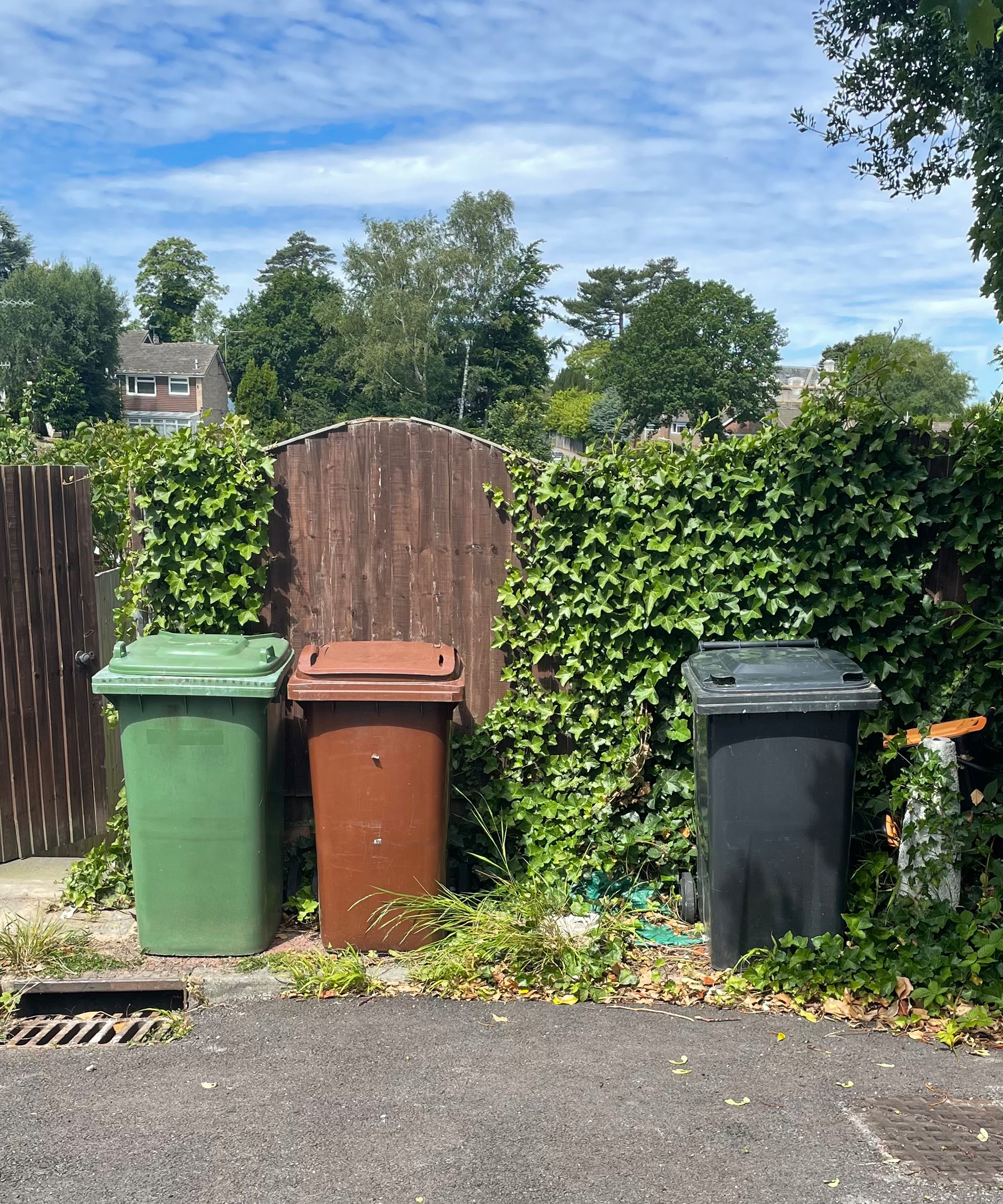
Added stability
It is a good idea to build a base for your bin store as this creates a stable, level platform and prevents the base from sitting in moisture, as it would on say grass or mud. You can create a base with bricks or slabs or even by pouring concrete into a pre-prepared wooden frame. As my bin store is actually located on a raised curb area, adding any further height would’ve made it hard to get the bins on and off the base so I didn’t in this instance.
As the bin store is a permanent outdoor feature it’s important to ensure that it is stable and secure. You don’t want it blowing around in heavy winds as could be dangerous to people and property. Slatted sides will make the store less susceptible to wind damage.
You will need:
1. Constructional timber (for frame)
2. Timber for side slats
3. Wood for planters (I upcycled mine but you could buy from your local hardware store)
4. Wood screws (a selection be sure to include lots of long ones!)
5. I needed a top up of 8cm screws for the frames
6. Cordless drill - I’ve had mine for ages but this model looks very similar
7. Electric screwdriver: I like the Bosch Home and Garden Cordless Screwdriver IXO (5th generation, 3.6 V from Amazon
8. Paint - I loved this shade (Willow) of Ronseal Garden paint
9. Saw
10. A good tape measure like a Stanley
11. A generic level
12. Compost
13. Plants
14. Planter liners - I used bin liners but you can get planter liners on Amazon easily
15. A workbench like this one from Amazon made life much easier when constructing the frame
16. Step ladder (depending on the final height of the unit).
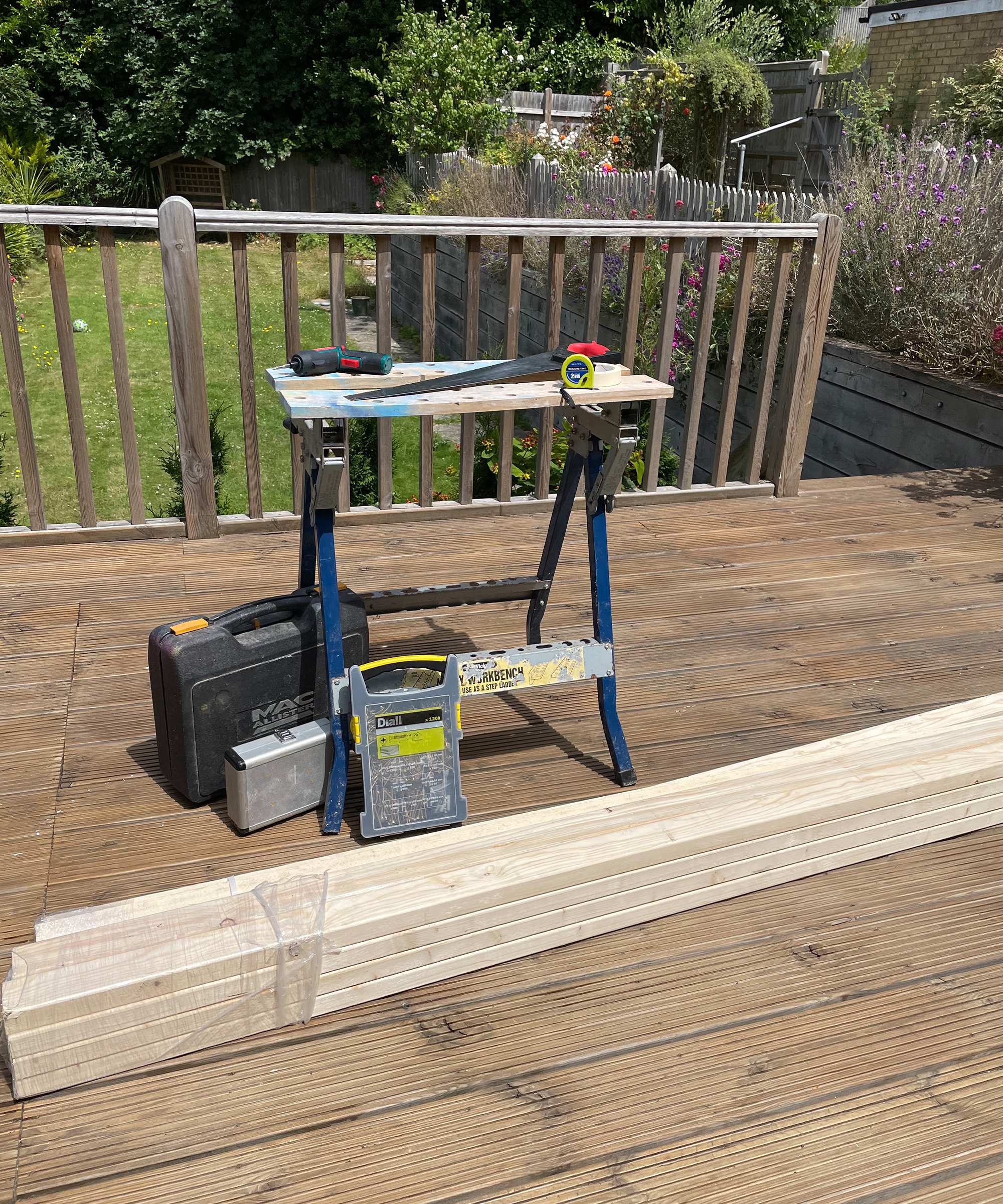
How to build a DIY trash can enclosure
The following instructions assume that you have first designed your bin store and after measuring up have created a detailed plan with a cutting guide to ensure the store fits your space and requirements.
Top Tip: When completing outdoor projects, always ensure you have a solid, flat area to work on i.e. not a lawn or uneven or sloped path.
1. Construct the frames
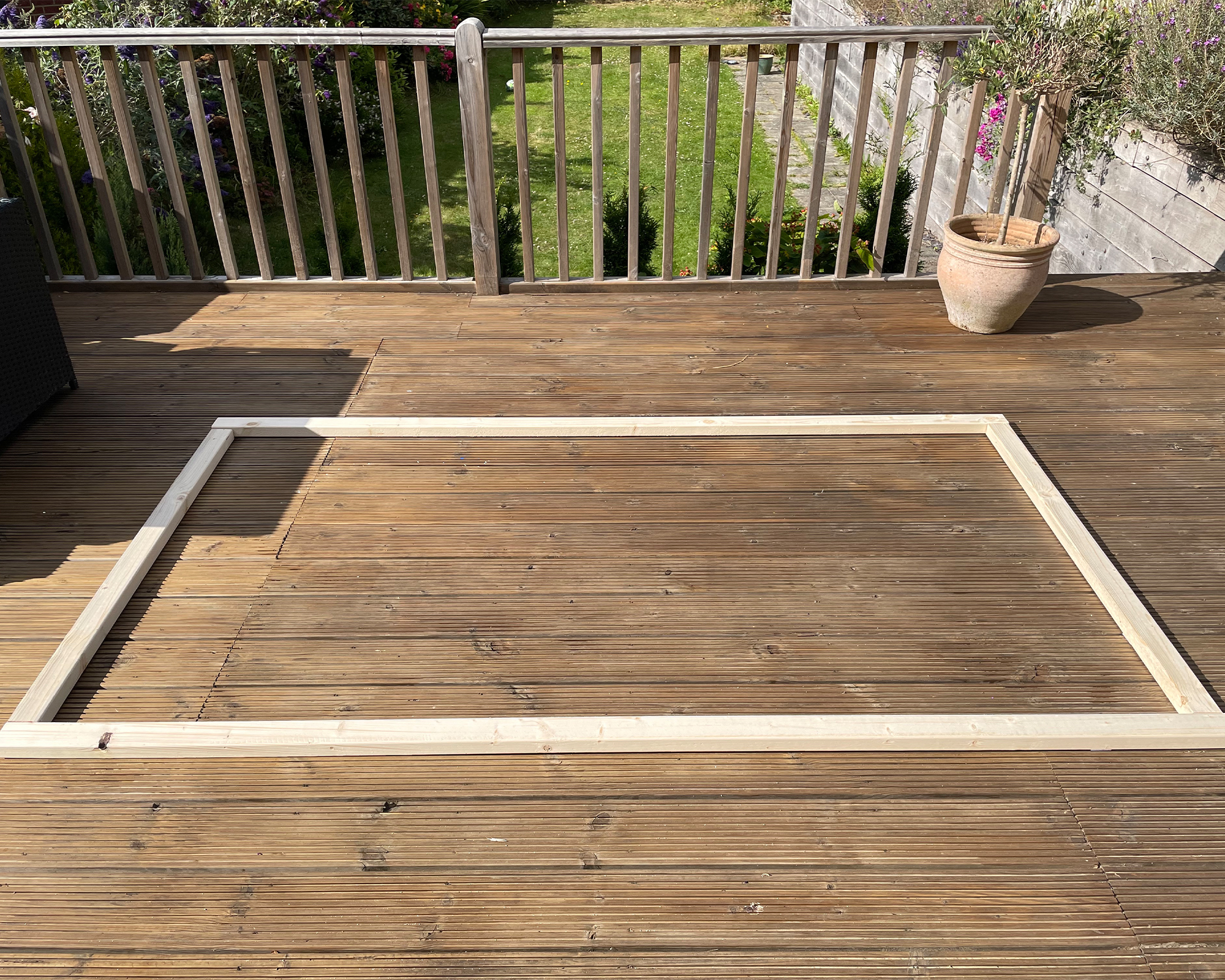
Refer to your cutting guide and cut timber to size (measure twice and cut once!) You might find it easier to use a workbench and/or clamps to hold the timber in place while you measure and cut.
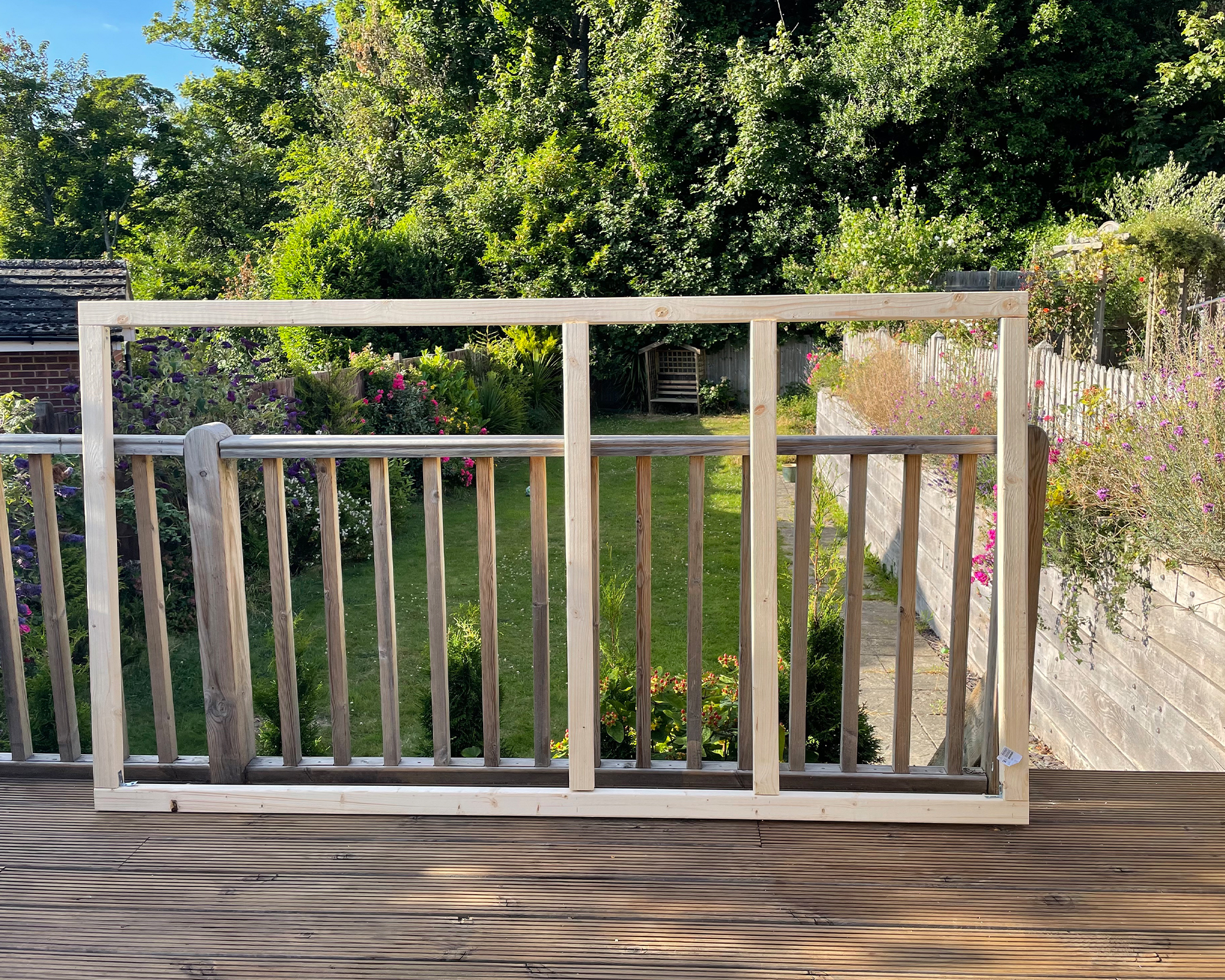
Line up the pieces of wood for the back frame piece and drill pilot holes where the screws need to go. Screw the pieces together using the pilot holes as guides for the screws.
To ensure the pieces join together correctly, you should use clamps to prevent the timber from moving while you drill and screw. For extra stability, you can add corner braces as shown below
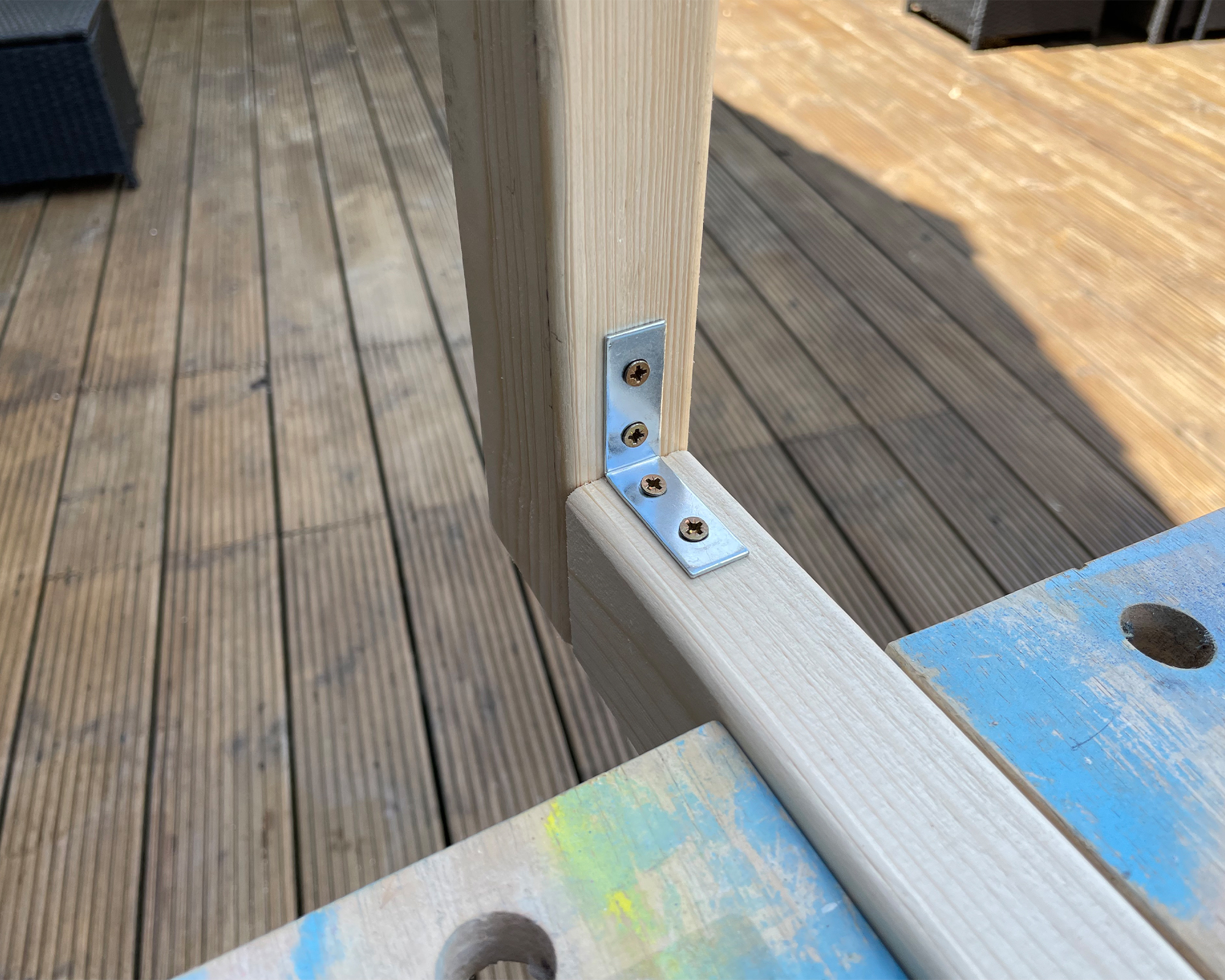
Complete the same process to build the four adjoining side frames. I chose to add thin, vertical slats to the end panels, but you could opt for a completely different style.
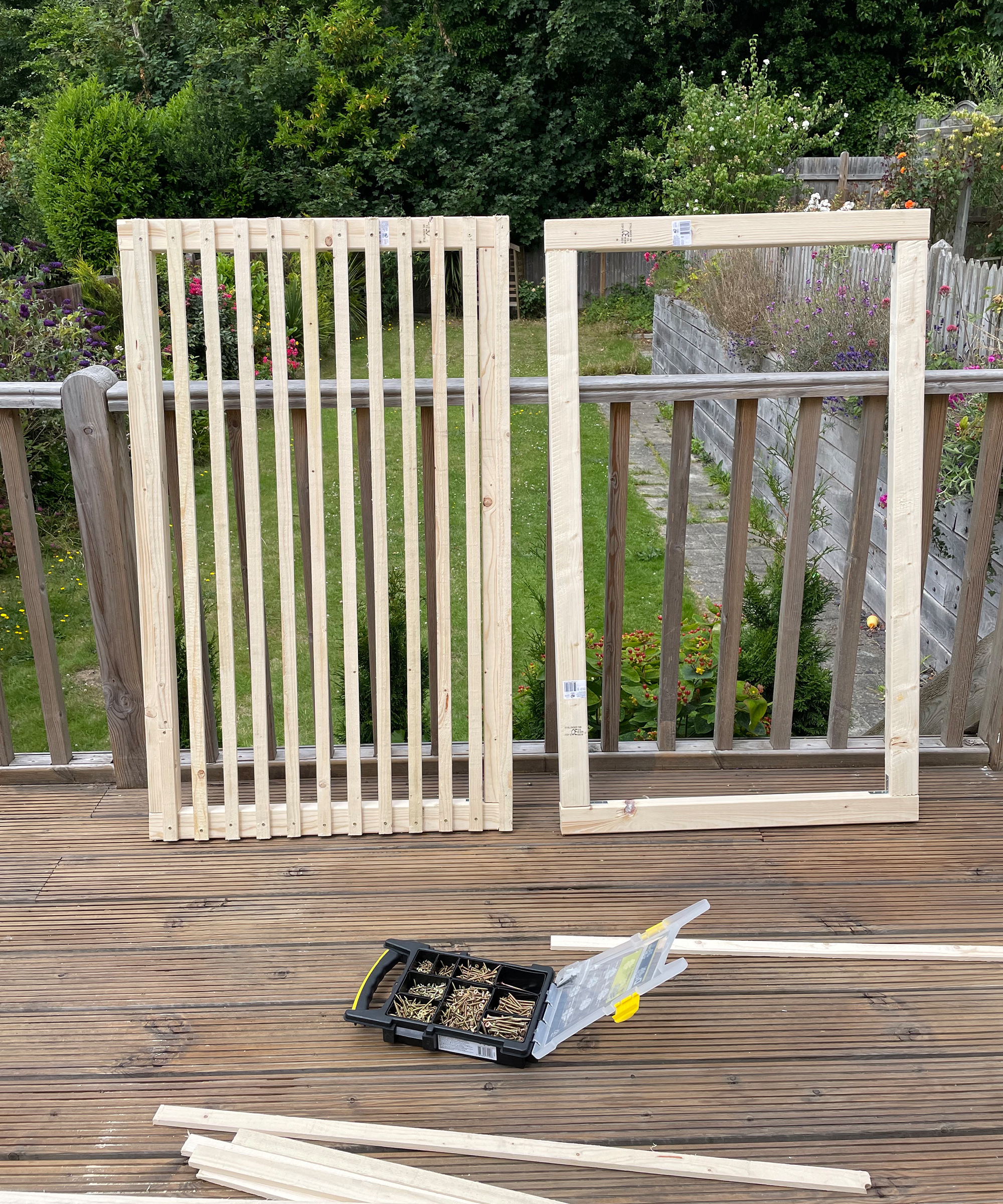
Top tip: Use a block of wood cut to the desired thickness to template the gaps between your slats. This is much quicker than measuring each individual gap and is less likely to cause errors and irregular-sized gaps.
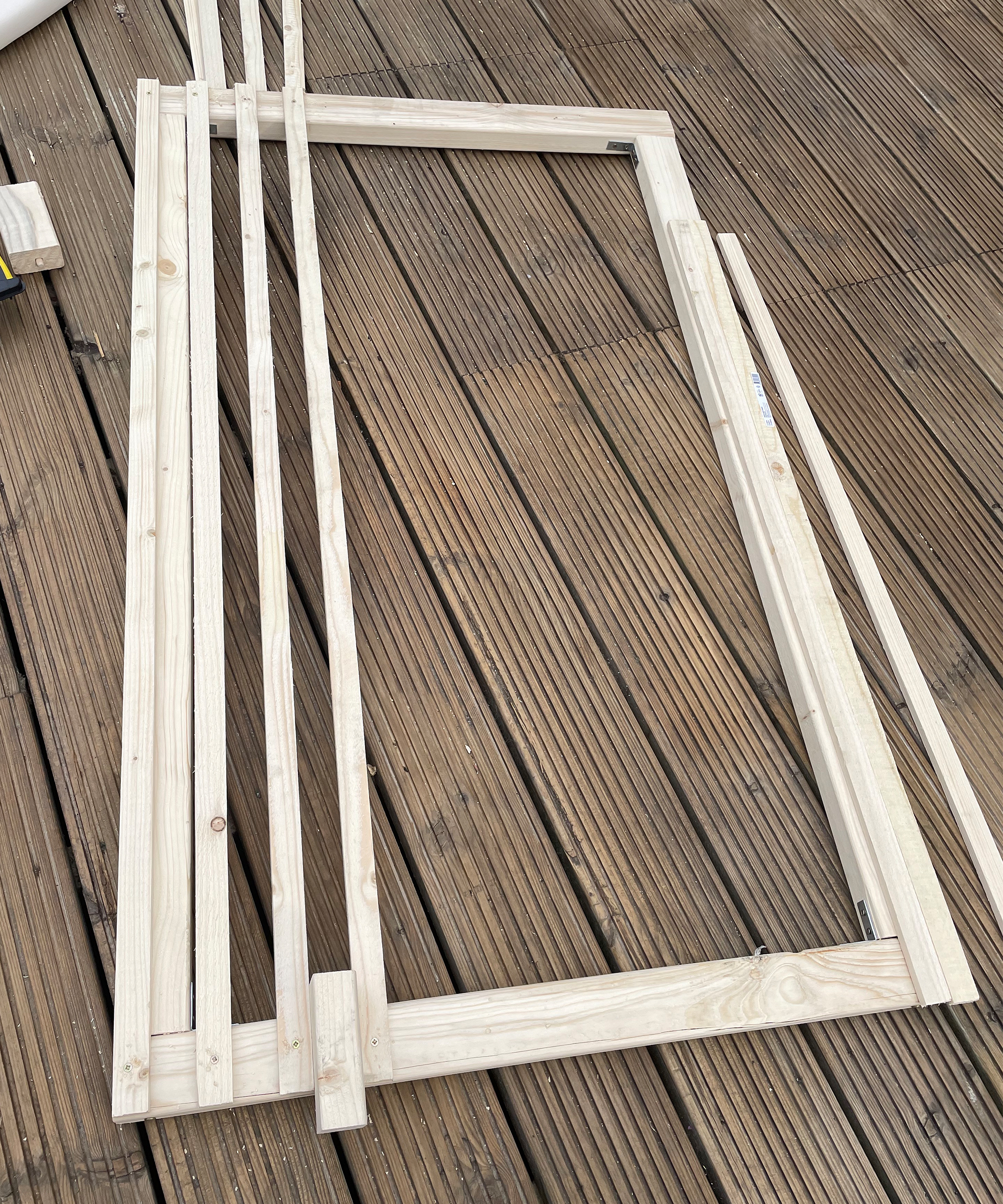
Note: I had originally planned to house the recycling boxes at the end on the right-hand side, but there is a rather annoying bollard in the way (which I don’t have permission to excavate) so I had to adapt the design. Housing the boxes at either end would actually save time and money as would require one less frame.
2. Construct the shelf
Once all four frames are constructed, it’s time to build the shelf for the middle section. As you can see from the image below this was a simple construction using two pieces of timber and some wooden slats.
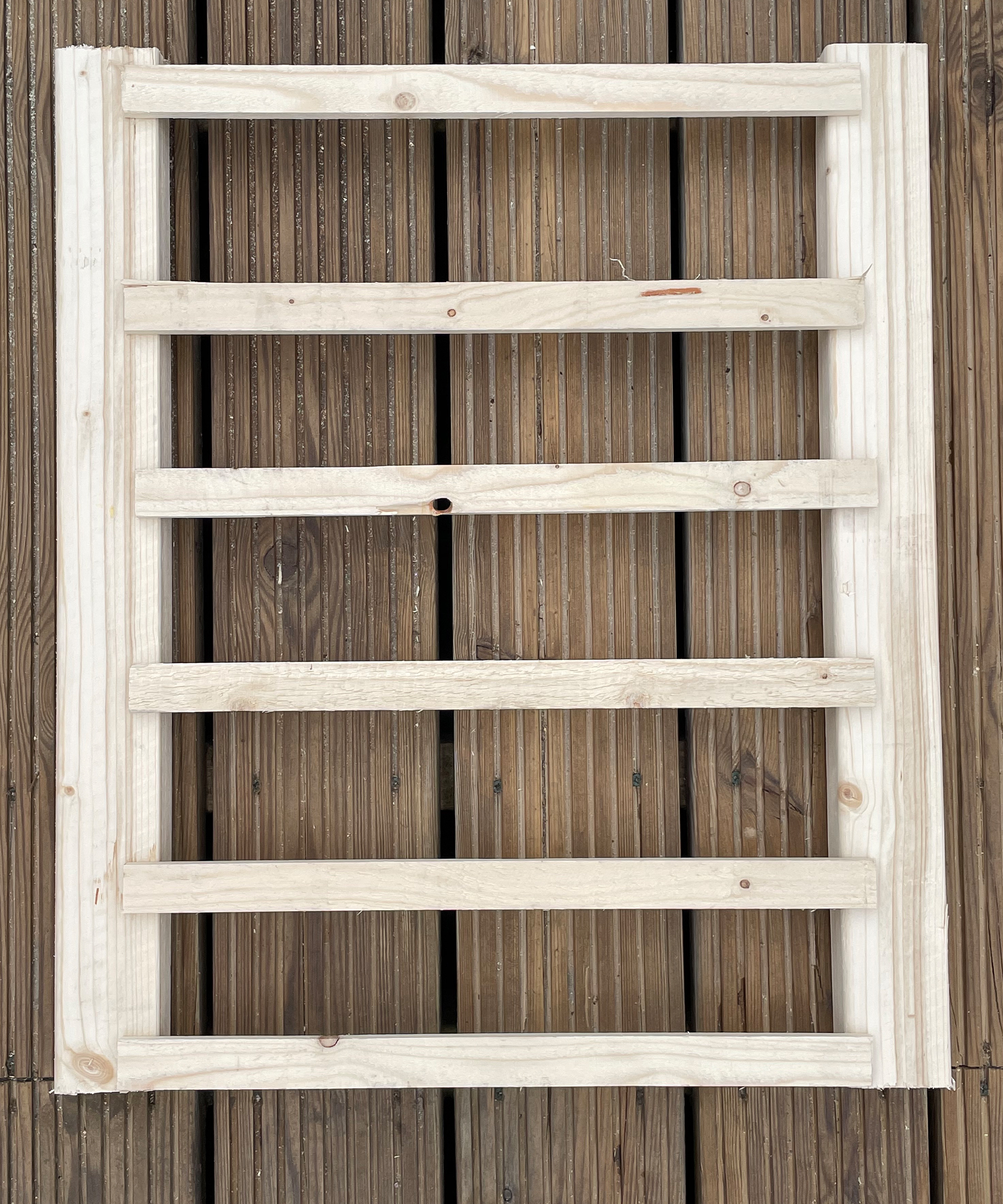
Join the two internal frames together with two pieces of timber cut to the required length, as shown below.
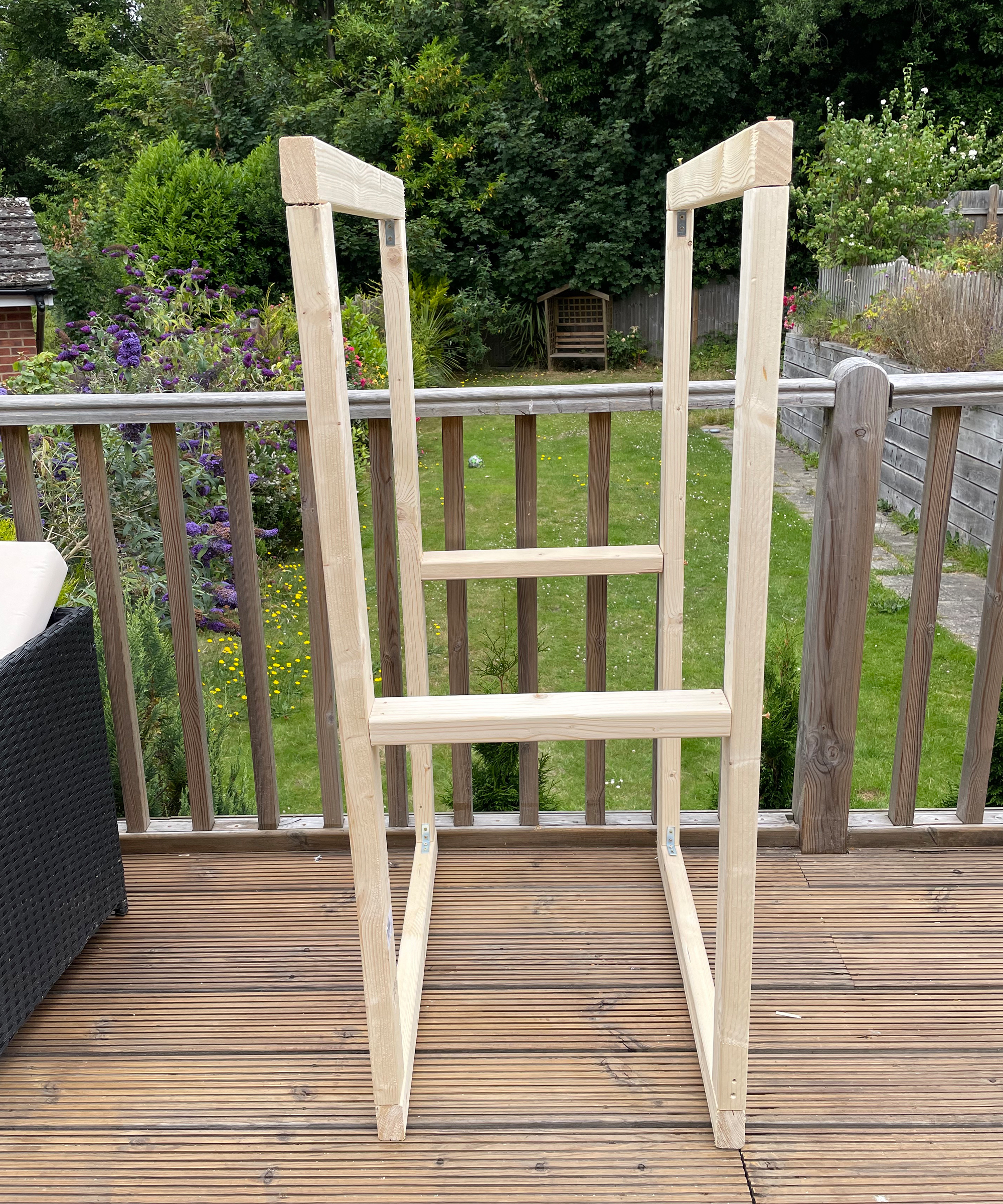
Place your shelf into position and screw it into the sides of the frame (As seen in the image below). Check that your recycling boxes fit in the spaces provided and when you are happy screw the structure into the back frame.
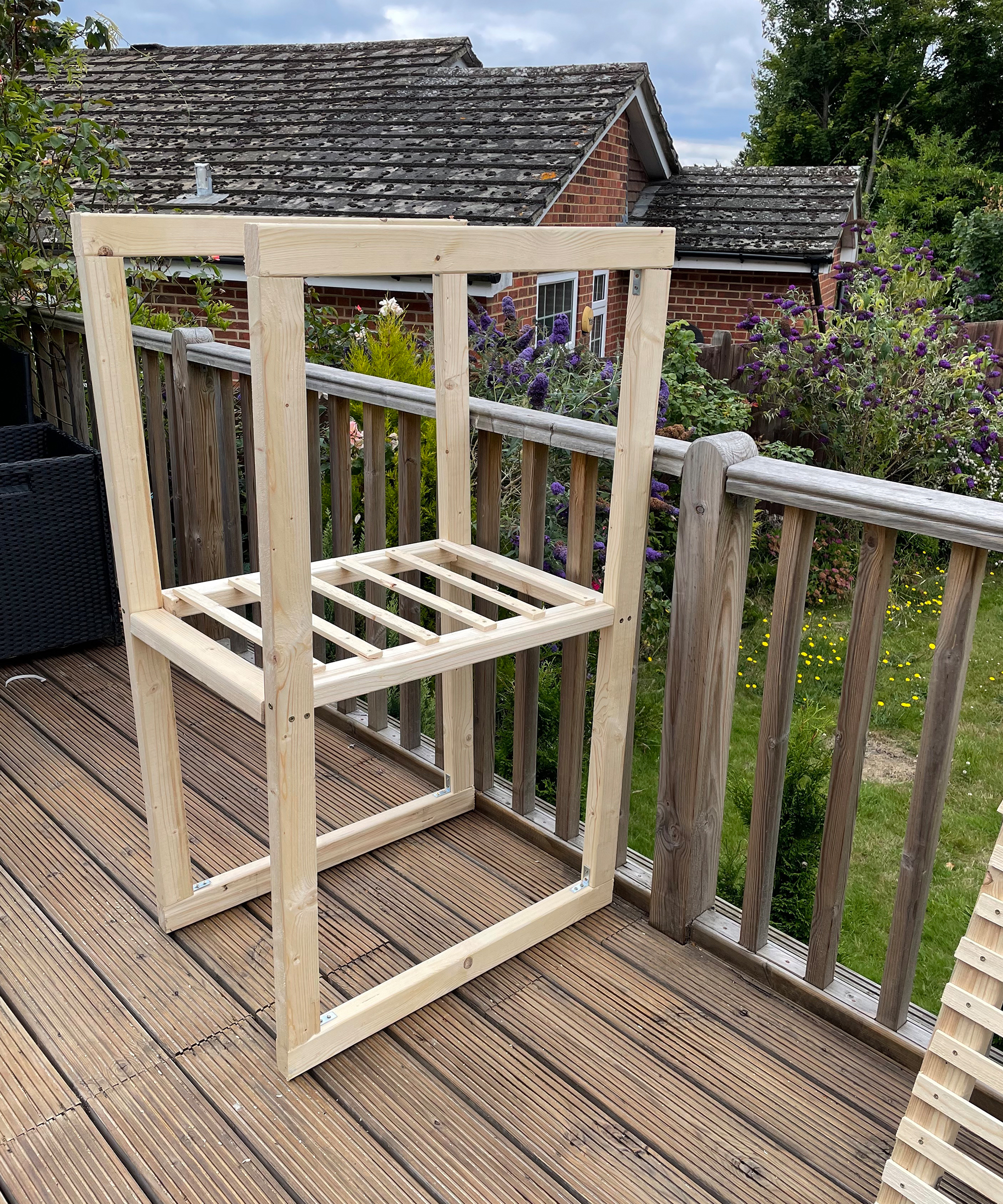
Fix the end panels to the back frame creating the basic structure, it’s essential to check that your trash cans fit in the allocated spaces before constructing the roof.
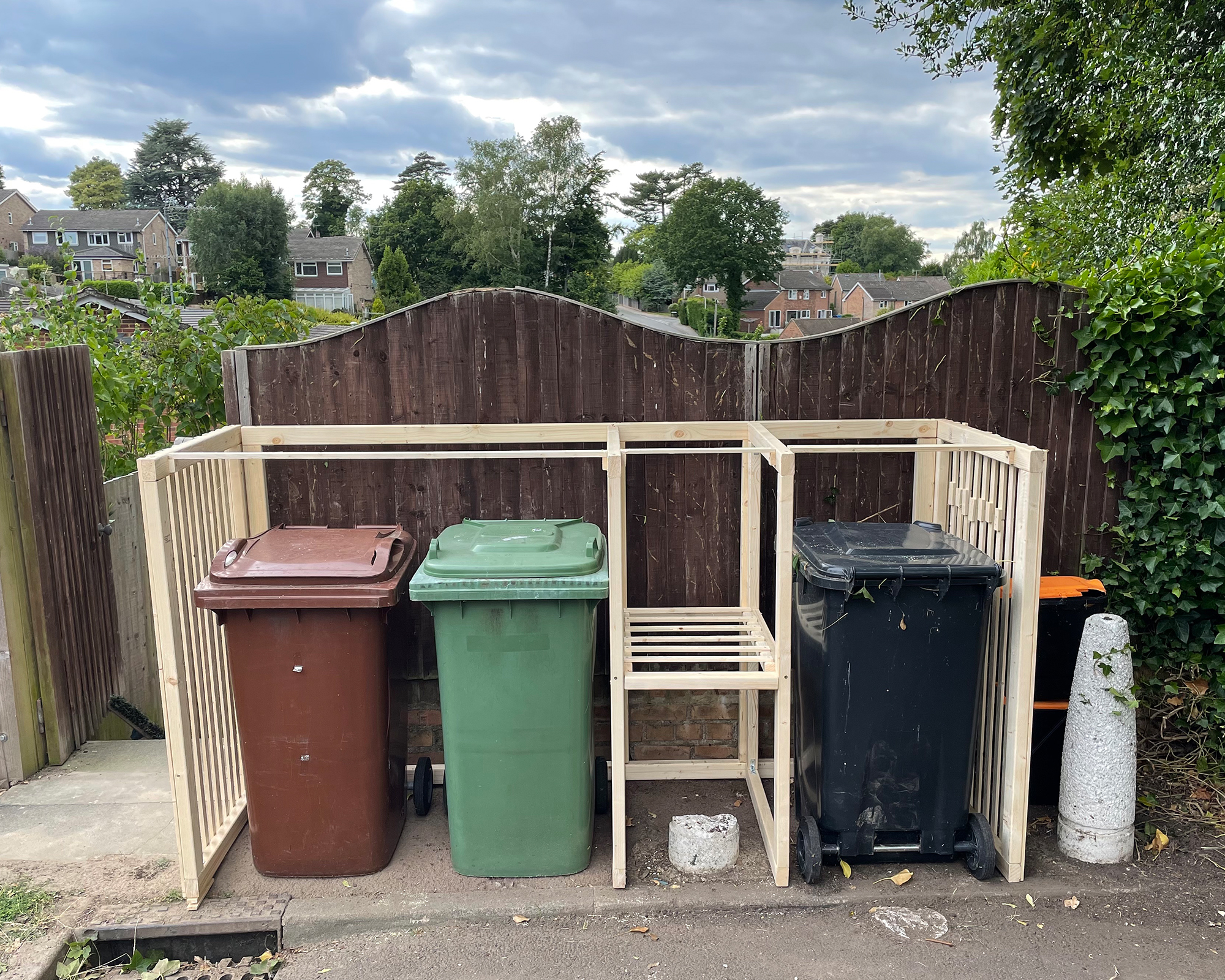
3. Build the planters
I secured the housing together by adding some timber lengths across the top of the frame. These double up as the base for the planters so they needed to be strong and stable.
I opted for rustic planters on the top of the unit that, to save money and waste, I made using leftover offcuts of wood that I already had. You could create a more uniform look by buying timber to match the frame. Screw the planters to the main frame of the unit.
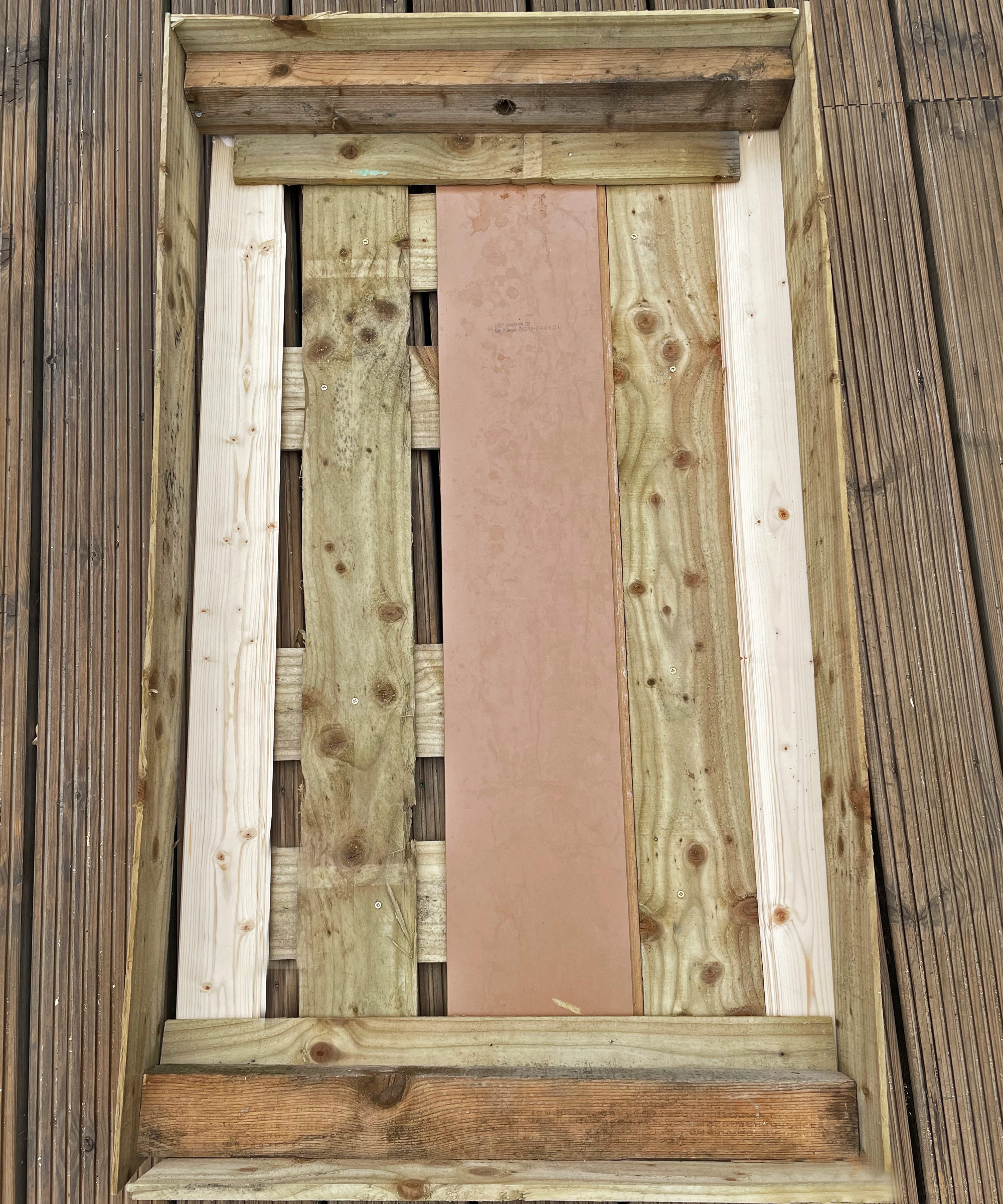
4. Time to paint
I’d always planned to paint the bin store to add a pop of color to an otherwise dull area. You could oil or stain for a more natural look. If you are careful to use treated timber when you construct the unit then it can be left for a few months without any additional oil or stain. I used Ronseal Garden paint in the shade Willow, which is available on Amazon, and applied three coats.
Once painted, line the planters. I used plastic bin liners as they are just as effective as planter liners but cheaper to buy.
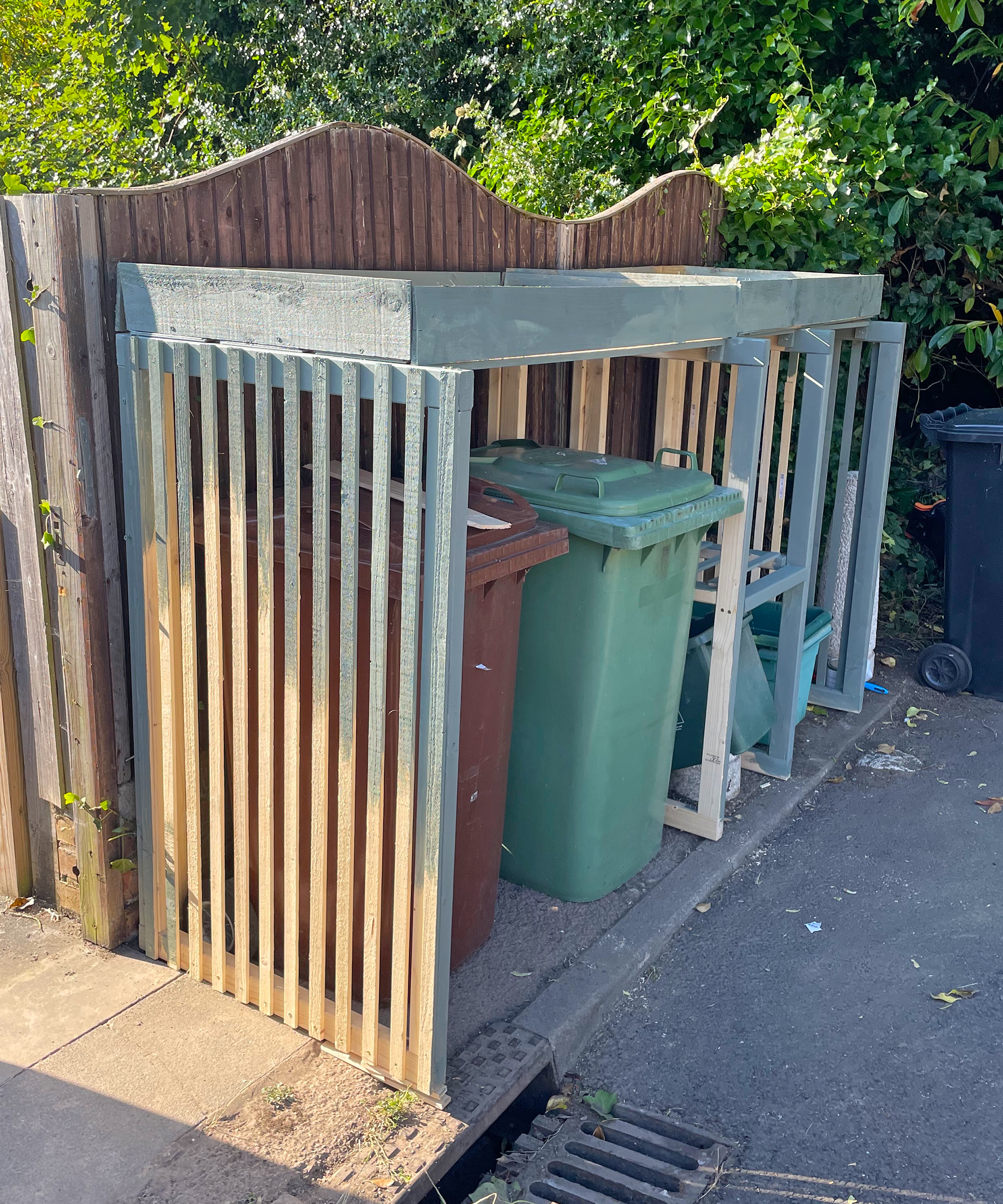
Top Tip: Don't forget to make drainage holes in the base of your planters and also in the liner too.
5. Planting
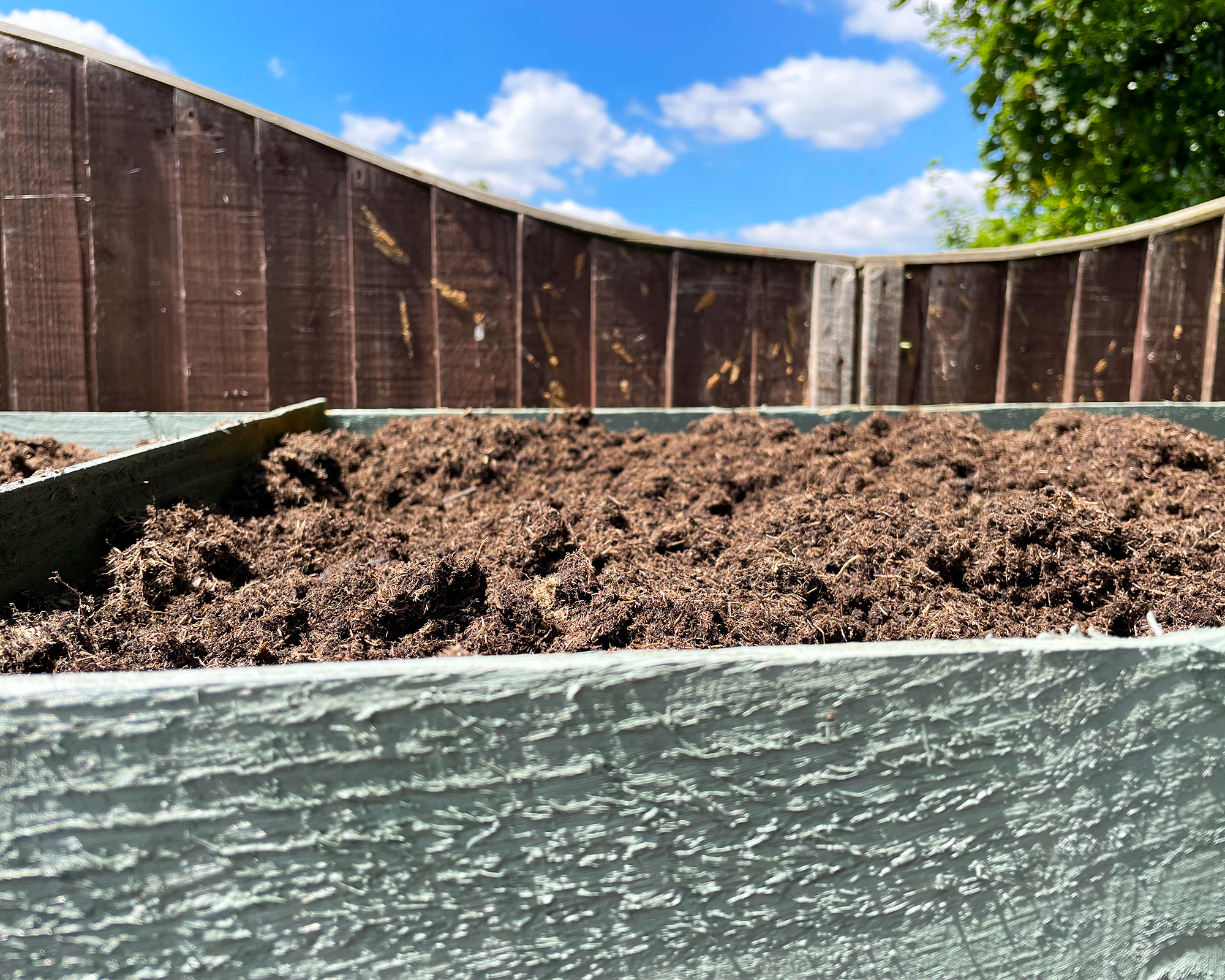
I chose a selection of herbs and small shrubs for the planters, but you can select anything that is happy to grow in relatively shallow soil. Don’t forget to water the planters regularly, especially in the heat.
And there you have it, a DIY trash can enclosure with a storage shelf and rooftop planters that is totally customizable and would look great outside every home.
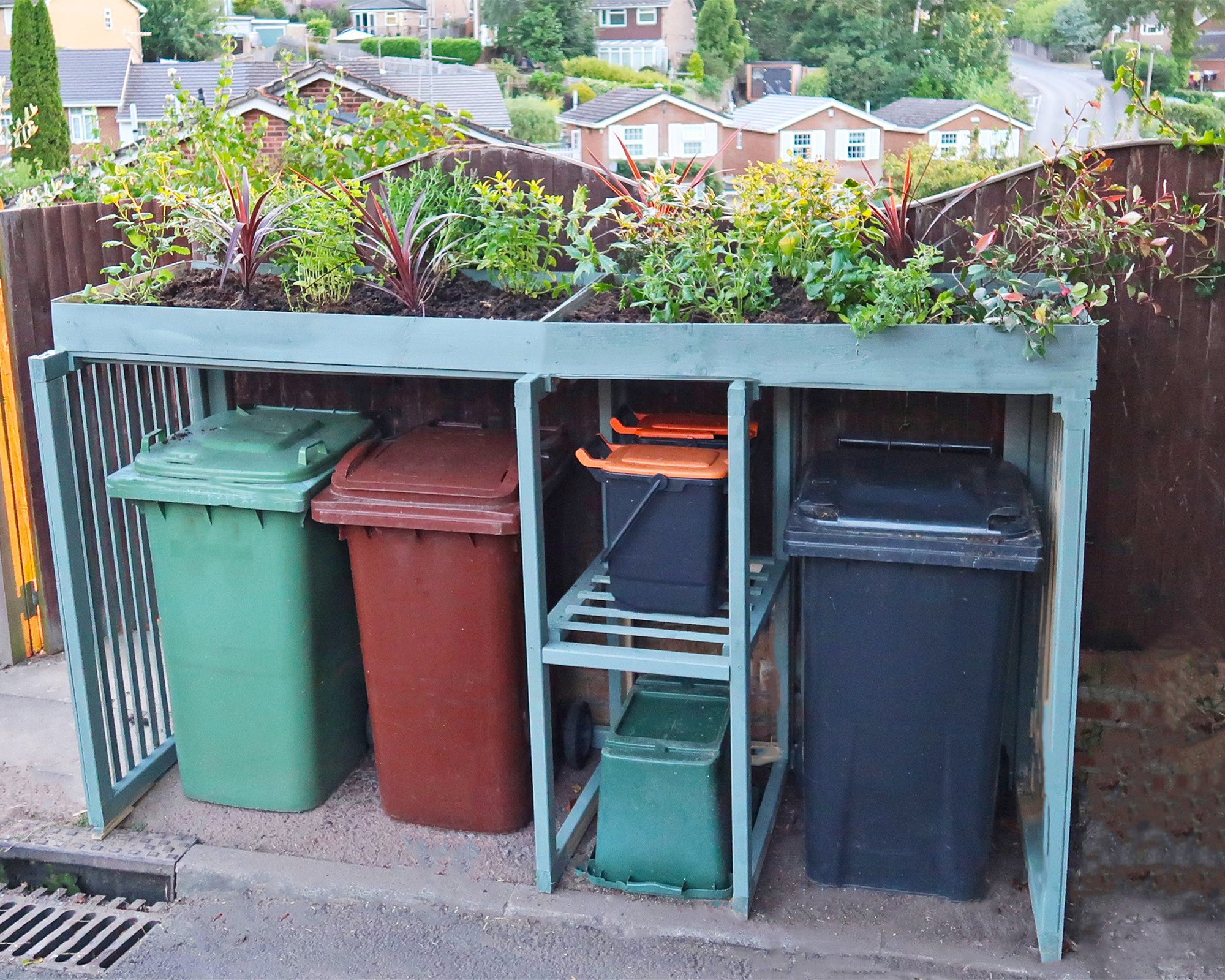
Join our newsletter
Get small space home decor ideas, celeb inspiration, DIY tips and more, straight to your inbox!

I'm happiest when I have either a drill or paintbrush in my hand! I specialise in room transformations on a budget and love experimenting with different styles and techniques which I share on my Instagram. I believe that your imagination, not your budget, should be the limiting factor when transforming a room and I love thinking of creative ways to build custom and bespoke-looking furniture using flatpacks or upcycle finds.
I also love writing and my home improvement blog (ClaireDouglasStyling.co.uk) is my passion project where I share creative ideas for interior styling and DIY tips and tutorials.
-
 A $200 fluted panel transformed my drab kitchen in just one weekend
A $200 fluted panel transformed my drab kitchen in just one weekendHow to install a fluted kitchen panel: A speedy and achievable DIY tutorial even for DIY novices
By Claire Douglas Published
-
 How to replace a broken staircase spindle in 30 minutes flat
How to replace a broken staircase spindle in 30 minutes flatA missing or broken spindle on a staircase is not only unsightly, but it can be a real hazard. This is how to fix it in a few quick steps.
By Kate Sandhu Published
-
 An IKEA Billy bookcase hack inspired this cute media wall DIY
An IKEA Billy bookcase hack inspired this cute media wall DIYThis cute DIY was inspired by an IKEA Billy bookcase hack and brought a ton of symmetry to an otherwise basic media wall space.
By Camille Dubuis-Welch Published
-
 Share your small space glow up to win $150 in the Real Homes competition
Share your small space glow up to win $150 in the Real Homes competitionShow off your creativity and DIY skills to win $150 and for the chance to be featured exclusively in Real Homes magazine
By Camille Dubuis-Welch Last updated
-
 This oversized headboard looks designer, and takes 5 steps to DIY
This oversized headboard looks designer, and takes 5 steps to DIYSuper simple to DIY, this oversized headboard will give your bedroom space all the designer vibes you could dream of.
By Claire Douglas Published
-
 My DIY range hood and backsplash build gave my kitchen the perfect farmhouse finish
My DIY range hood and backsplash build gave my kitchen the perfect farmhouse finishI craved charm in my kitchen space and adding a custom range hood and shelving was the best move.
By Brooke Waite Published
-
 How to paint a radiator in 7 steps
How to paint a radiator in 7 stepsPainting radiators properly is all about choosing the right paint and the best process. Get interior designer-worthy results with our how-to.
By Kate Sandhu Published
-
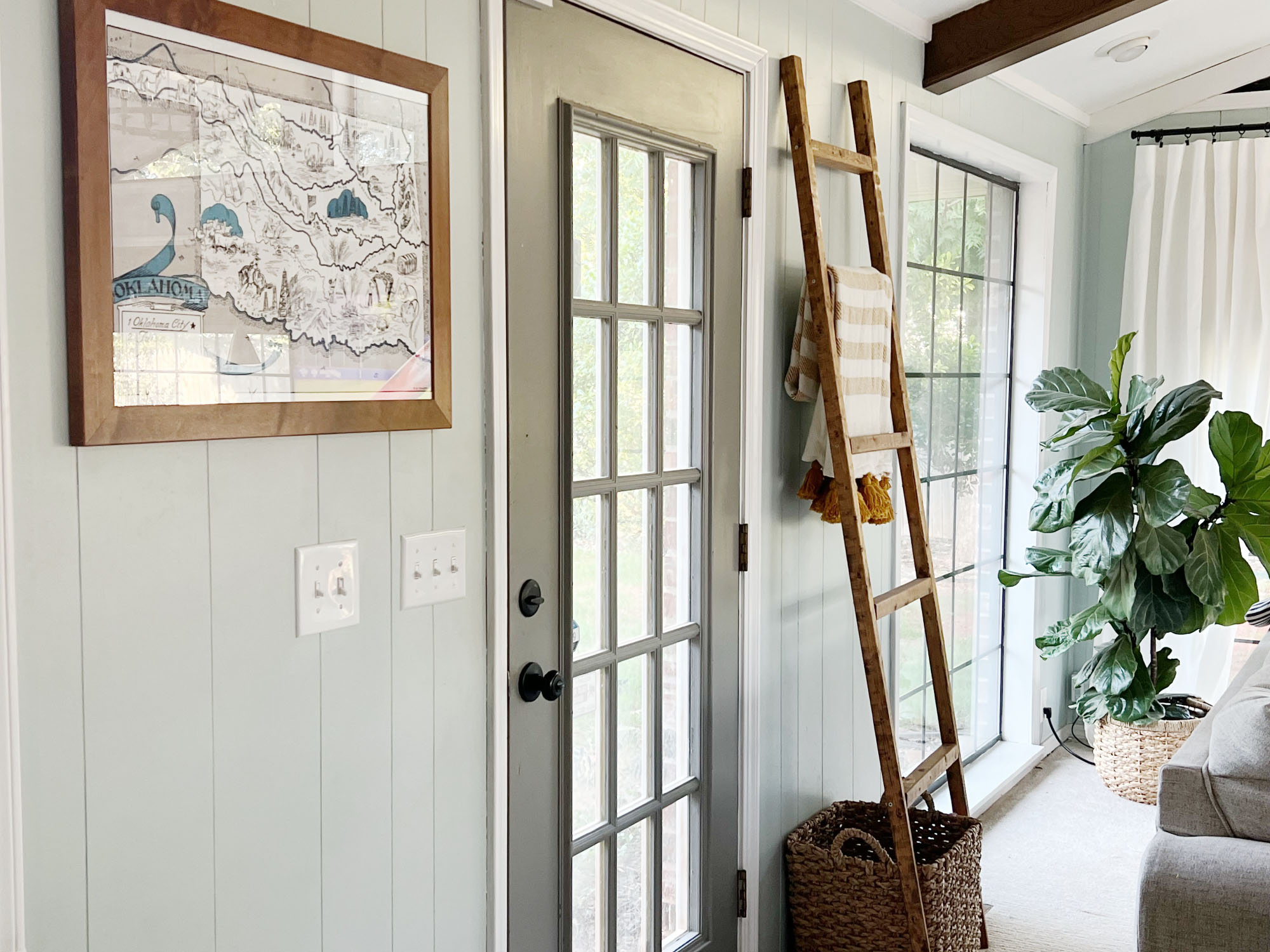 How to install a door knob
How to install a door knobUpdating your interior and exterior doors can be as easy as changing out the hardware! The best part is that installing a door knob is very DIY friendly. Follow these simple steps and enjoy a fresh look on your doors!
By Dori Turner Published